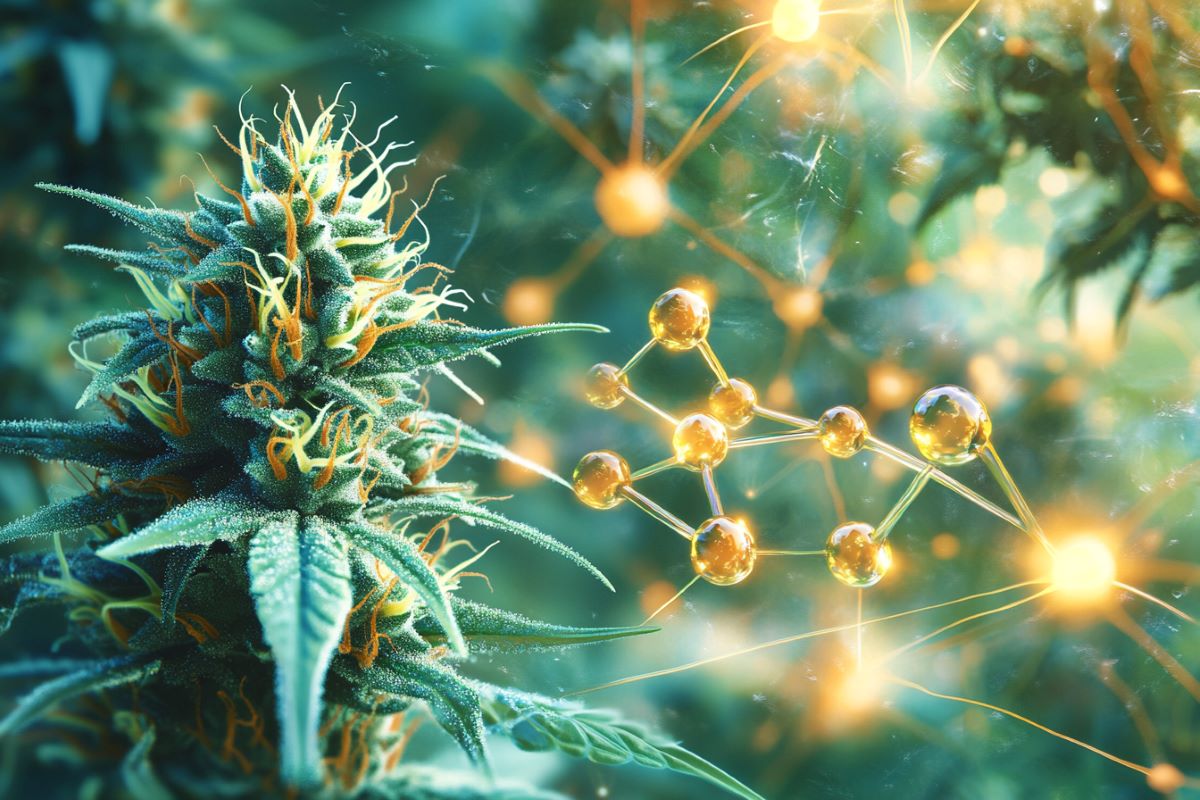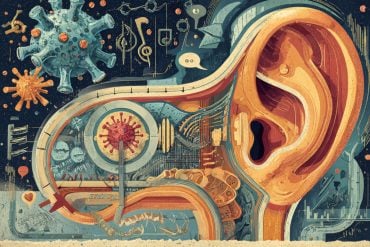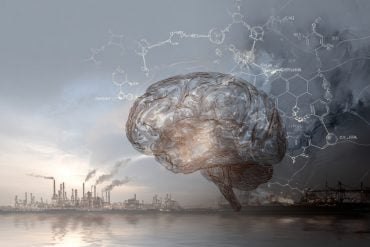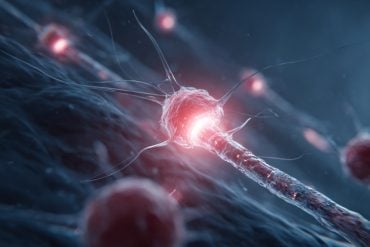Summary: Researchers have identified how CBD interacts with cannabinoid receptors to mitigate the negative effects of THC, the psychoactive component of cannabis. Unlike THC, which fully activates the receptor and causes side effects like memory loss and addiction, CBD acts as a modulator, fine-tuning receptor activity.
This discovery could lead to targeted therapies that enhance THC’s pain-relieving benefits while reducing unwanted side effects. The study also opens new avenues for synthetic CBD research, allowing for more precise control of receptor behavior.
Key Facts:
- CBD as a Modulator: Unlike THC, CBD binds to cannabinoid receptors like a dimmer switch, adjusting function rather than fully activating or deactivating them.
- Reducing THC Side Effects: This research suggests CBD could be used to minimize THC’s negative effects, such as memory loss and addiction, while preserving its pain-relief properties.
- Future Applications: Understanding CBD’s interactions could lead to synthetic versions with improved therapeutic benefits and fewer risks, particularly for pain management.
Source: University of Mississippi
University of Mississippi researchers have discovered how a compound found in cannabis might be used to mitigate the negative effects of THC, a psychoactive compound in the plant.
This breakthrough sets the stage for new uses of the CBD, which could help people who experience anxiety, chronic pain and a number of other illnesses.
Amar Chittiboyina, principal scientist and associate director of the National Center for Natural Products Research, and a team of investigators recently published their research in ACS Neuroscience.

“This research will open a new avenue for anyone in the field of cannabis research,” Chittiboyina said. “It actually opens up new prospects or a new horizon in modulating cannabinoid receptors and harnessing THC’s beneficial effects for pain management.”
CBD is one of more than 200 natural cannabinoids in the cannabis plant, but unlike some of its counterparts, CBD is not psychoactive. Its popularity in the United States has grown since 2018, when the Agricultural Improvement Act decriminalized hemp.
“The 2018 Farm Bill passage effectively opened a Pandora’s box of research challenges,” Chittiboyina said. “CBD’s use proliferated across a wide spectrum from pain management, recreational purposes to seemingly endless other applications.
“However, the fundamental question lies in understanding how CBD works on various targets and exerts its perceived effects at the molecular level.”
Cannabinoid receptor type 1 is a protein found throughout the body that regulates pain, mood, appetite, metabolism and memory. Both CBD and THC bind to this protein.
When THC attaches to the receptor, the effect is like an off switch to a light bulb, effectively turning “off” the pain. But THC also has harmful side effects, including memory loss, nausea and addiction.
When CBD binds to the receptor, however, it acts more like a dimmer switch, turning up or down the function of the protein.
The researchers have discovered the locations on this protein molecule where CBD binds, meaning future research could “turn down” or minimize the side effects of THC use.
“Our primary objective is to harness the beneficial effects of THC while mitigating its undesirable side effects,” said Pankaj Pandey, a research scientist in the center.
This research could help scientists develop a synthetic CBD that can alter receptor behavior more efficiently even than CBD, said Robert Laprairie, associate professor at the University of Saskatchewan and co-author of the study.
“When people talk about cannabis, they tend to focus on or think of it just as a drug, as the plant,” Laprairie said.
“But we have a treasure chest of drug possibilities here and what we’re trying to do is pick out specific, very focused effects and refine those.
“We’re trying to pull out the benefits and leave the harms behind.”
One example of new research that is made possible by the recent findings is that of William Neal, a postdoctoral researcher at the Ole Miss center. Neal’s upcoming research hopes to determine if CBD use would affect opioids like morphine in the body.
“In the event that CBD binds to an opioid receptor, you could have negative interplay with opiate drugs like morphine,” Neal said.
“If you’re getting pain relief from opiates, and if CBD negatively interferes with the opioid receptor, it’s going to frustrate people who are prescribed opiates.
“As a result, CBD will reduce efficacy of opiates and could enhance the drug abuse liabilities.”
Neal’s research into the interaction of CBD and opioids is only one of many avenues that are opened due to this research, Chittiboyina said.
“That’s what I mean when I say this is a new horizon for cannabinoids research,” Chittiboyina said. “Often, to mitigate pain, patients combine opiates with cannabis, kratom and other substances. Is this approach beneficial or detrimental?”
More research is needed to confirm the team’s findings before they finalize their results.
“But if we can pinpoint how CBD interacts with multiple targets on molecular level, we will be in a stronger scientific position to develop solutions that are relevant to public health,” he said.
Funding: This material is based on work supported by the National Institute of General Medical Sciences grant no. P30GM122733, the National Science Foundation XSEDE Bridges allocation no. CHE190092 and Mississippi State-sponsored National Center for Cannabis Research and Education.
About this neuropharmacology research news
Author: Clara Turnage
Source: University of Mississippi
Contact: Clara Turnage – University of Mississippi
Image: The image is credited to Neuroscience News
Original Research: Closed access.
“Determination of the Negative Allosteric Binding Site of Cannabidiol at the CB1 Receptor: A Combined Computational and Site-Directed Mutagenesis Study” by Amar Chittiboyina et al. ACS Chemical Neuroscience
Abstract
Determination of the Negative Allosteric Binding Site of Cannabidiol at the CB1 Receptor: A Combined Computational and Site-Directed Mutagenesis Study
Cannabinoid receptor 1 (CB1R) has been extensively studied as a potential therapeutic target for various conditions, including pain management, obesity, emesis, and metabolic syndrome.
Unlike orthosteric agonists such as Δ9-tetrahydrocannabinol (THC), cannabidiol (CBD) has been identified as a negative allosteric modulator (NAM) of CB1R, among its other pharmacological targets.
Previous computational and structural studies have proposed various binding sites for CB1R NAMs. An X-ray crystal structure revealed a binding site for the NAM, ORG27569, at an extrahelical location within the inner leaflet of the membrane. In contrast, multiple computational studies have previously proposed several potential allosteric binding sites for CBD within the CB1R structure.
Given that a prior structural study suggested CBD might occupy the same site as ORG27569, we conducted a comprehensive investigation of potential CBD binding sites using molecular docking, molecular dynamics (MD) simulations, metadynamics (MTD) simulations, binding free-energy calculations, and in vitro mutagenesis experiments.
Molecular docking, MD, and MTD simulations results, along with binding free-energy calculations, suggest that CBD may potentially bind to either the same extrahelical site as ORG27569 or a previously unidentified intracellular site located near TMHs 2, 6, and 7 and helix 8. This intracellular site is consistent with allosteric binding sites observed in other G protein-coupled receptors (GPCRs).
To establish the most favorable allosteric site for CBD, we conducted site-directed mutagenesis of key residues at each site. Mutations at S4018.47ΔA and D4038.49ΔA augmented the binding of [3H]-SR141716A, suggesting these residues play critical roles in CBD binding.
As a result, the combined computational and mutagenesis results identified a binding site for CBD between TMHs 2, 6, and 7 and helix 8, involving residues Y1532.40, I1562.43, M3376.29, L3416.33, S4018.47, and D4038.49.
These findings provide valuable insights into how CBD binds to CB1R, thereby informing the rational design of new, selective, and potent NAMs. Moreover, the elucidation of this previously unexplored allosteric site might explain the polypharmacology of CBD due to structural conservation among Class A GPCRs.






